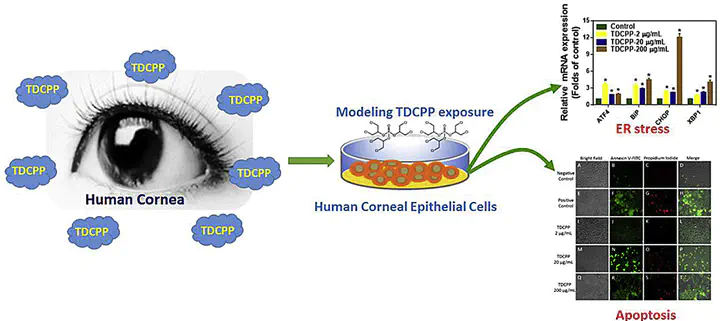Effects of organophosphorus flame retardant TDCPP on normal human corneal epithelial cells: Implications for human health

Abstract
Tris(1,3-dichloro-2-propyl) phosphate (TDCPP) is one of the most detected organophosphorus flame retardants (OPFRs) in the environment, especially in indoor dust. Continuous daily exposure to TDCPP-containing dust may adversely impact human cornea. However, its detrimental effects on human corneal epithelium are largely unknown. In this study, we investigated the cell apoptosis in normal human corneal epithelial cells (HCECs) after TDCPP exposure and elucidated the underlying molecular mechanisms. Our data indicated a dose-dependent decrease of cell viability after TDCPP exposure with LC50 at 202 μg/mL. A concentration-dependent apoptotic sign was observed in HCECs after exposing to ≥2 μg/mL TDCPP. Endoplasmic reticulum stress induction was evidenced by up-regulation of its biomarker genes (ATF-4, CHOP, BiP, and XBP1). Furthermore, alternation of Bcl-2/Bax expression, mitochondrial membrane potential loss, cellular ATP content decrease, and caspase-3 and -9 activity increase were observed after exposing to 2 or 20 μg/mL TDCPP. Taken together, the data implicated the involvement of endoplasmic reticulum stress in TDCPP-induced HCEC apoptosis, probably mediated by mitochondrial apoptotic pathway. Our findings showed TDCPP exposure induced toxicity to human cornea. Due to TDCPP’s presence at high levels in indoor dust, further study is warranted to evaluate its health risk on human corneas.